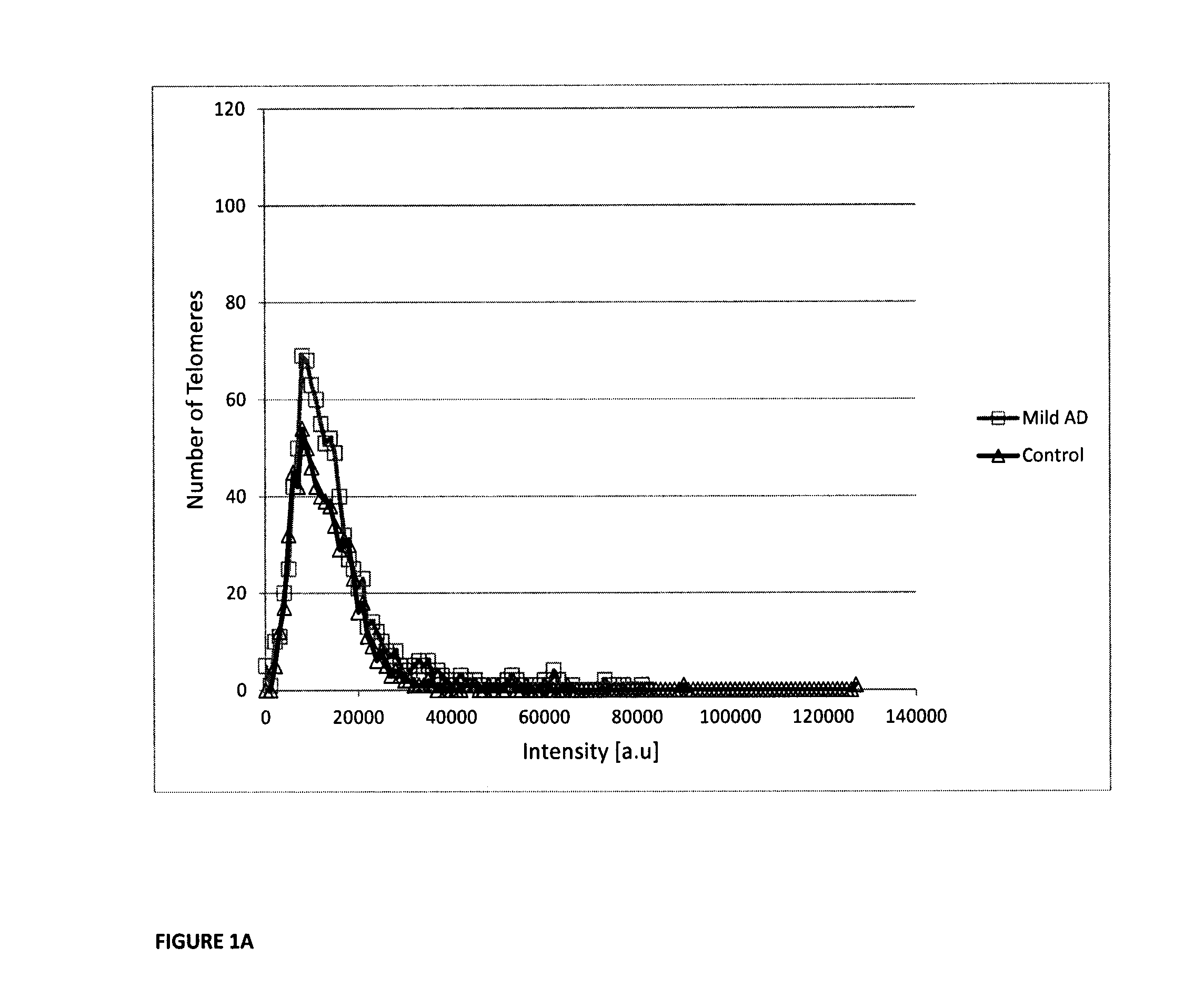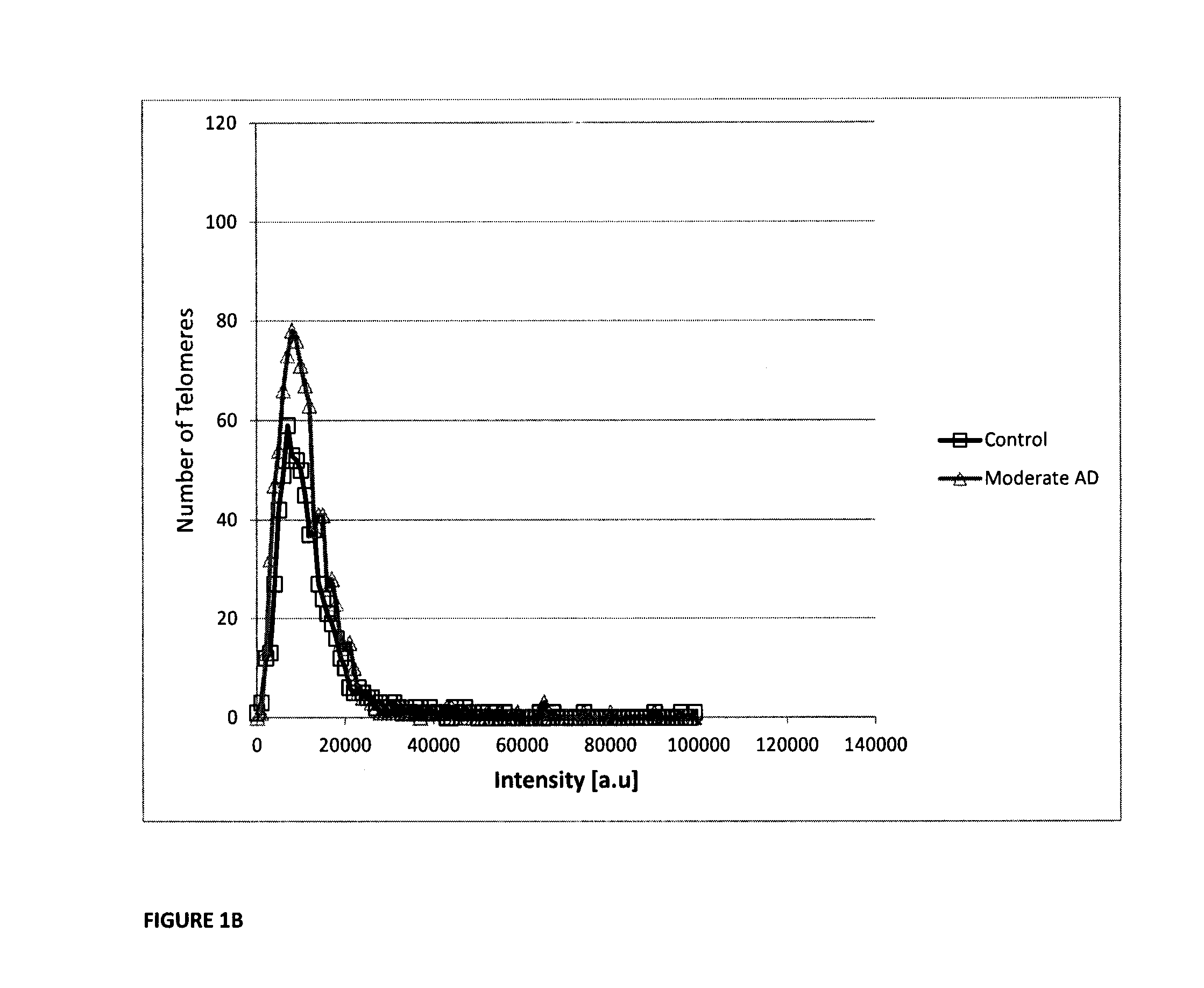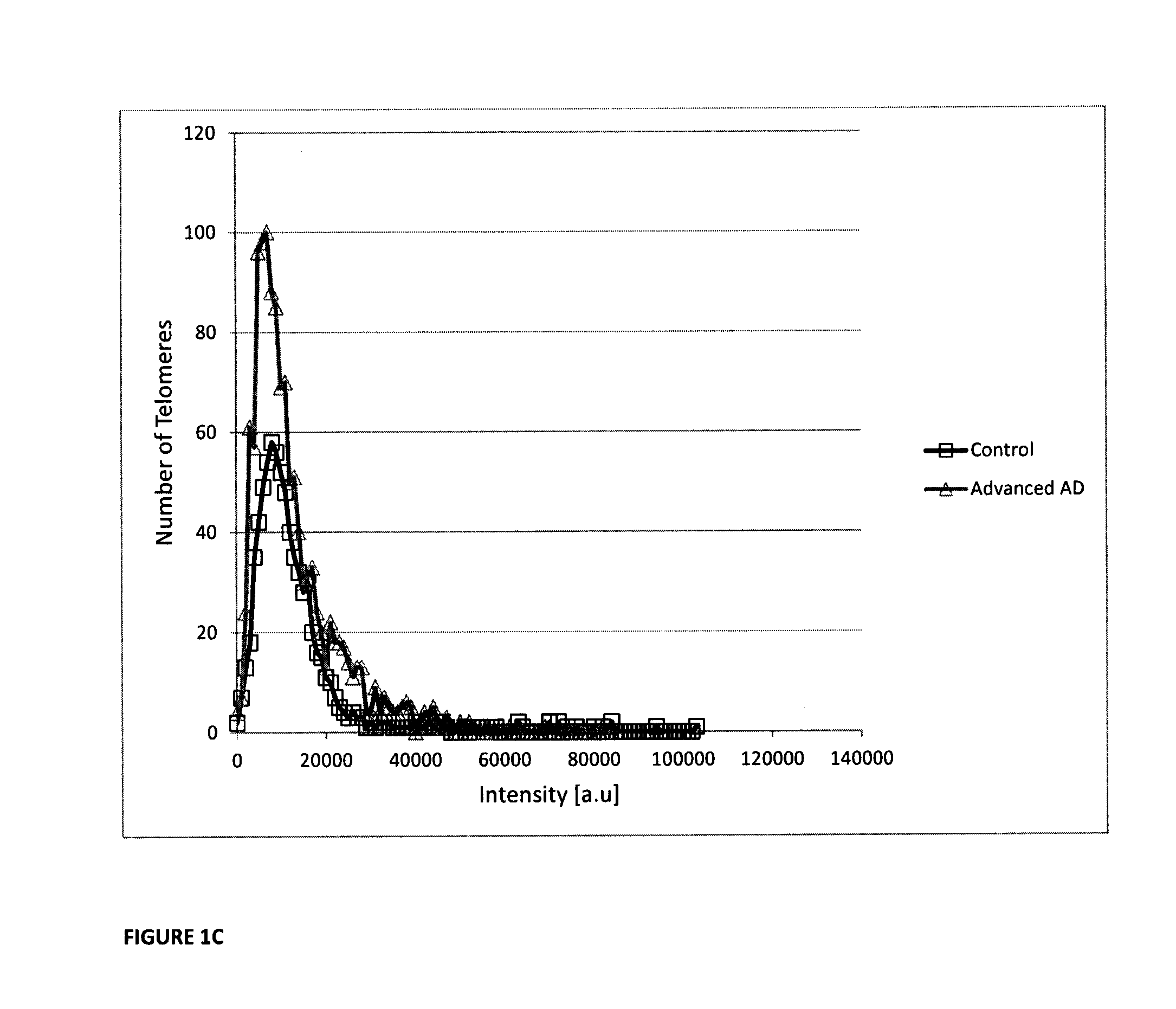Methods for Diagnosing Alzheimer's Disease
a technology for alzheimer's disease and telomeres, applied in disease diagnosis, biochemistry apparatus and processes, instruments, etc., can solve the problems of telomere length studies, full replication, genomic instability, etc., and achieve the effect of reducing telomere length and increasing the likelihood of diseas
- Summary
- Abstract
- Description
- Claims
- Application Information
AI Technical Summary
Benefits of technology
Problems solved by technology
Method used
Image
Examples
example 1
[0246]One of the aims of this study was to investigate changes in the three-dimensional (3D) nuclear architecture in AD patients and age related healthy controls using 3D quantitative fluorescence in situ hybridization (3D Q-FISH) to determine if there were any differences in telomere number, length, aggregates and cell cycle profiles represented by a / c ratios (Vermolen et al., 2005) in AD patients compared to healthy age-matched controls.
[0247]Fifty-nine patients with AD (ranging in stage from mild to severe) and their fifty-nine cognitively normal age-matched caregivers were included in this study. Buccal cells (BCs) were used in the study because they have a number of advantages; not only can samples be collected non-invasively, but BCs also originate from the neuro-ectoderm, which is where brain tissue is derived from.
[0248]BCs were used previously to study telomere length in AD patients. A study using PCR showed that BCs have significantly shorter telomere lengths than age matc...
example 2
Purpose
[0270]Telomeres are linear repeats of two thymidine, an adenine and three glycine residues capping human chromosomes. They maintain chromosomal integrity and prevent chromosomal instability. Telomeres shorten progressively with each cell division and, therefore, with age. The main aim of the study described herein was to analyze the three-dimensional (3D) architecture of telomeres in AD patients compared to age-matched normal controls, and the feasibility of obtaining cells from buccal swabs for 3D analysis. 3D analysis allows for quantification of telomere numbers, length and aggregates. Buccal swabs were chosen because cells derive from the neuroectoderm from which brain tissue also originates, and they can be collected non-invasively. Previous studies have only investigated telomere length in different types of cell with conflicting results.
Methods
[0271]Fifty-nine patients with AD (stage mild to severe) and fifty-nine cognitively normal age-matched controls were included i...
example 3
[0274]The following tables contain data relating to patients with aphasia (Table 3), mild AD (Table 4), moderate AD (Table 5) and severe AD (Table 6) as compared to controls. Further details regarding the AD patients are provided in Example 4. Statistical analysis for each sample set is found below the dataset. The analysis demonstrates that AD patients (mild, moderate and severe) have statistically different short, mid-sized and long telomeres compared to age matched controls.
[0275]For each of Tables 2-6, the three numbers corresponding to the control or patient for each intensity range represent the following:
[0276]The first row of numbers represents the frequency (i.e how many signals were in those particular ranges). The second row represents the row percentage (e.g the second row adds up to 100%). This row shows what percentage of the total signals were in the particular ranges. E.g., for Table 4 (mild AD), 1.47% of the signals were under 20000, 4.02% in the mid range, and 94.5...
PUM
| Property | Measurement | Unit |
|---|---|---|
| distance | aaaaa | aaaaa |
| distance | aaaaa | aaaaa |
| length | aaaaa | aaaaa |
Abstract
Description
Claims
Application Information
 Login to View More
Login to View More - R&D
- Intellectual Property
- Life Sciences
- Materials
- Tech Scout
- Unparalleled Data Quality
- Higher Quality Content
- 60% Fewer Hallucinations
Browse by: Latest US Patents, China's latest patents, Technical Efficacy Thesaurus, Application Domain, Technology Topic, Popular Technical Reports.
© 2025 PatSnap. All rights reserved.Legal|Privacy policy|Modern Slavery Act Transparency Statement|Sitemap|About US| Contact US: help@patsnap.com



